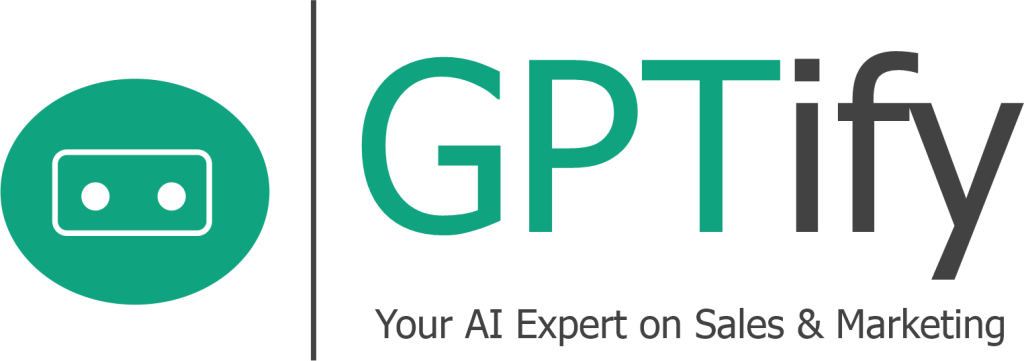Get AI citations in days, not months — This complete AEO (Answer Engine Optimization) checklist delivers measurable results within 7-14 days using engine-specific tactics that make your content instantly citable by ChatGPT, Perplexity, Bing Copilot, and Google AI Overviews.
Proven results from simple changes — Adding structured FAQ blocks and schema markup generated a 9,200% increase in FAQ impressions within one week for one B2B SaaS firm, while a skincare brand doubled conversions by restructuring content for AI citation.
No technical expertise required — Every tactic uses copy-paste implementations and quick QA checks you can run this week, from engine-specific formatting rules to GA4 tracking setup that measures AI referral traffic and citation volume.
Complete multi-engine strategy — Unlike generic AI optimization advice, you’ll get specific checklists for each major answer engine, plus the technical foundations and off-site signals that boost your authority across all platforms.
Ready to transform your existing content into AI-citation magnets? The step-by-step implementation starts with understanding exactly how AEO differs from traditional SEO and why it matters now.
The Complete Answer Engine Optimization Checklist: Get AI Citations in Days, Not Months
Answer engine optimization is a repeatable checklist you can run this week to earn citations from ChatGPT, Perplexity, Bing Copilot, and Google AI Overviews.
While traditional SEO targets search rankings, AEO (Answer Engine Optimization) makes your content discoverable and citable by AI tools that answer user questions. It builds on LEO structure and semantics best practices (Large Language Model optimization) so AI models can find and quote your content directly.
This production-ready playbook converts your existing content into AI-citation magnets using proven automation workflows.
Answer Engine Optimization vs Traditional SEO and Why It Matters Now
AEO is a checklist you can run this week to earn AI citations from ChatGPT, Perplexity, and Google AI Overviews.
The search landscape shifted in 2024. About 60% of Google searches now end without clicks, with answers served directly by AI results. ChatGPT handles roughly 1% of global search (85 million daily), Perplexity serves 15 million monthly users, and referral traffic from both platforms increased 44% and 71% respectively in six months.
Traditional SEO optimizes pages to rank and capture clicks using keywords and backlinks. AEO optimizes content so AI tools cite it during synthesis. In practice: short, sourced paragraphs with clear headings that make facts easy for models to extract.
The difference matters because AI engines synthesize content rather than just ranking it. Your content needs structured data and explicit source signals. In practice: named citations, timestamped facts, and FAQ-style formatting.
Companies see immediate results. Structured content earns higher click-through rates and more user trust when cited by answer engines. Treat AEO as an additional visibility channel alongside SEO and prioritize quick wins that make your content citable.
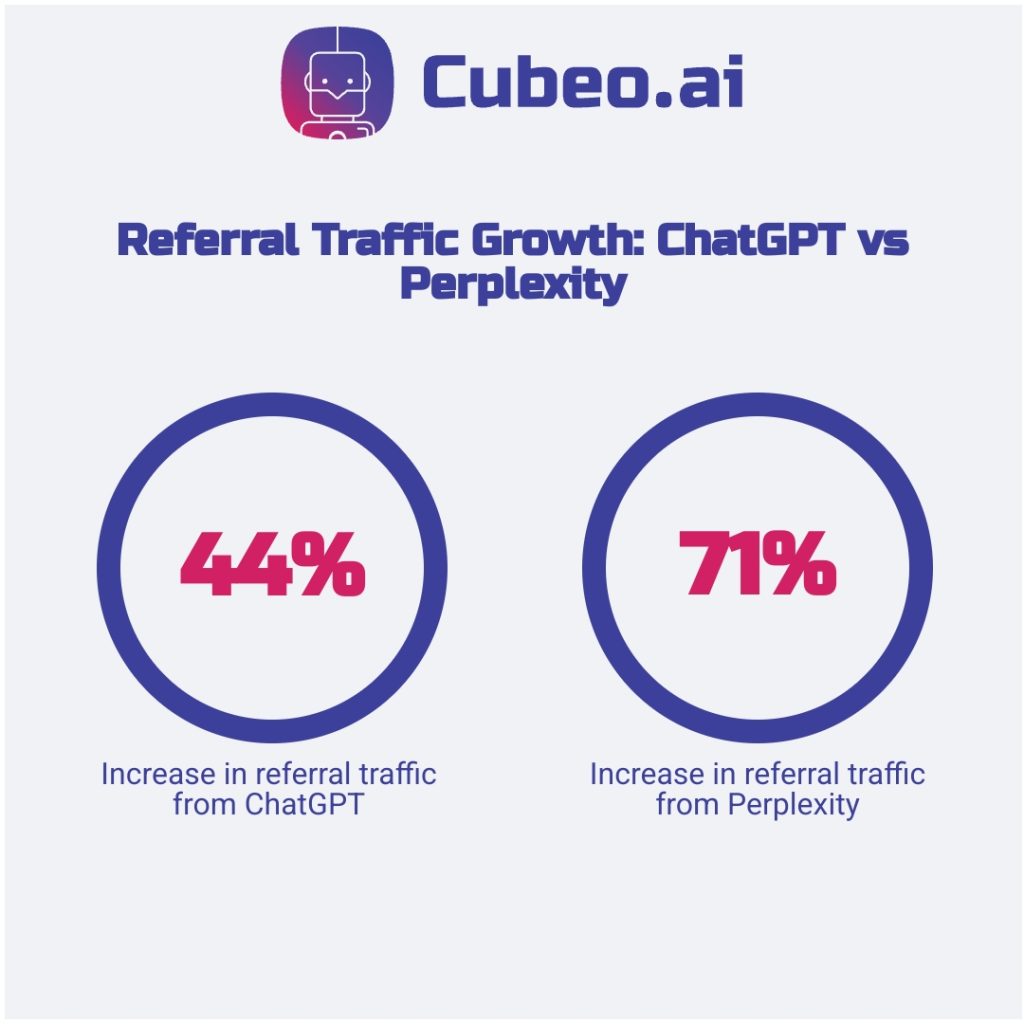
Engine Tactics That Earn AI Citations
Run these per-engine steps on one high-traffic page and expect first citation tests in days, not months.
ChatGPT Optimization:
- Use numbered lists and clear subheadings for easy parsing
- Include publication dates and author credentials in content
- Structure answers as problem solution pairs with specific examples
Perplexity Citation Requirements:
- Lead paragraphs with topic sentences containing key facts
- Use “According to [Source]” formatting for external references
- Format content with clear topic clusters that answer related questions
Claude Tactics:
- Add 2-3 sentence conversational summary at page top. QA: prompt Claude for “short explainer”
- Use numbered step lists for processes
- Include named-source sentences after each fact
Bing Copilot Requirements:
- Add publish date + author byline + named citation. QA: confirm header shows all three
- Use recent content (under 6 months)
- Structure with clear H2/H3 headings
Cross-engine essentials: named sources, timestamps, short leads, numbered steps. These engine-by-engine mechanics make facts extractable. Next, deploy schema and crawlability checks so AI engines can reliably find and cite them.
As search engine best practices evolve with AI integration, focus on making expertise easily extractable.
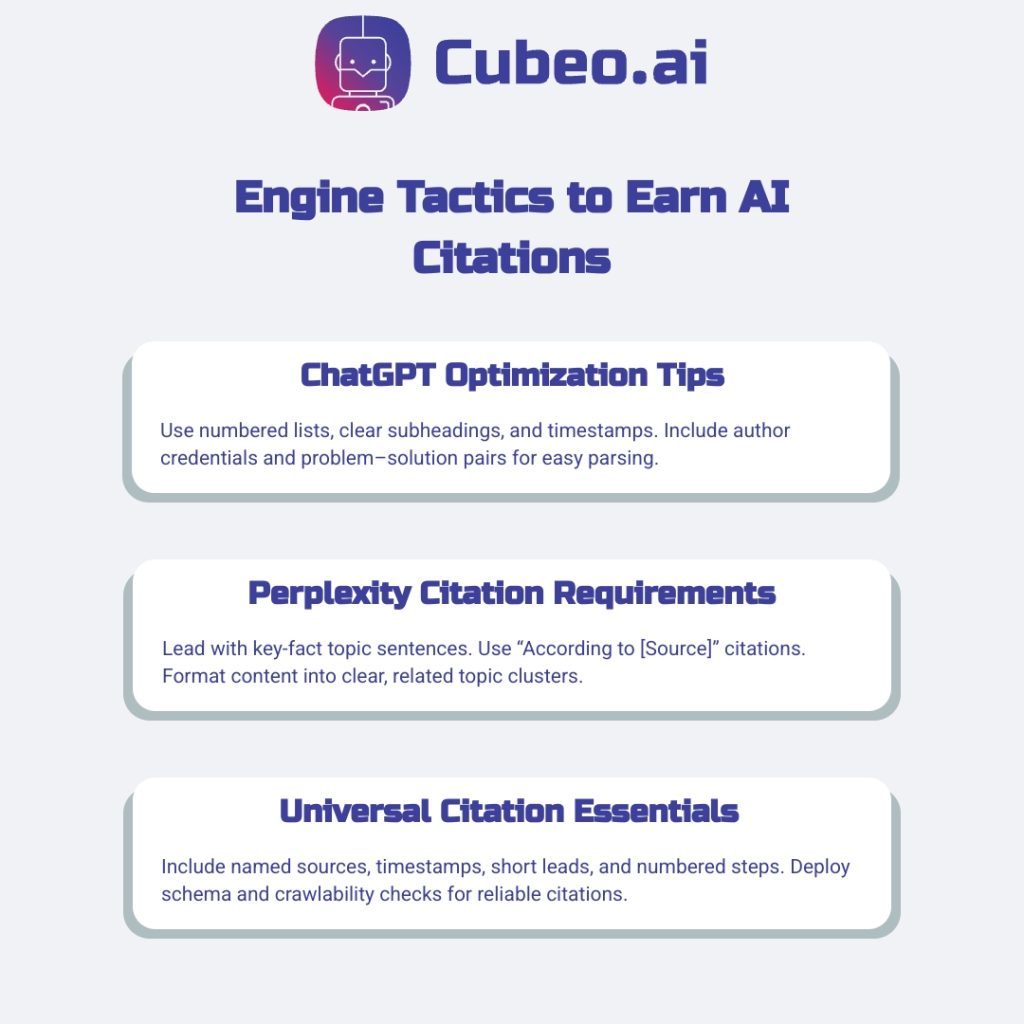
Technical Foundations for AEO Success
Your content needs the right technical infrastructure before AI engines can reliably find and cite it. These foundations support the engine-specific tactics covered earlier.
Essential Schema Markup:
- FAQ schema — makes Q&A content citable; QA: run Rich Results Test on sample FAQ page
- Article schema — provides author/date context; QA: validate JSON-LD with Schema.org validator
- A B2B SaaS firm adding FAQ schema to 1,120 pages achieved a 9,200% increase in FAQ impressions within one week
Content Structure Requirements:
- Use clear H1, H2, H3 heading hierarchy; QA: check headings follow logical order
- Lead paragraphs with topic sentences containing key facts
- Pages using schema markup show 58% higher visibility in AI snippets compared to non schema pages
Internal Linking Strategy:
- Connect related content to build topical authority clusters with descriptive anchor text
Crawlability Checklist:
- Ensure mobile-friendly design and fast page loading
- Submit XML sitemaps to Google/Bing; QA: verify robots.txt doesn’t block search crawlers
- Check server logs for 200 responses to bot user-agents
Technical implementation examples provide conversion-focused guidance for these foundational elements. With schema validated and crawlability confirmed, prioritize off-site citation signals to give answer engines reliable external proof of authority.
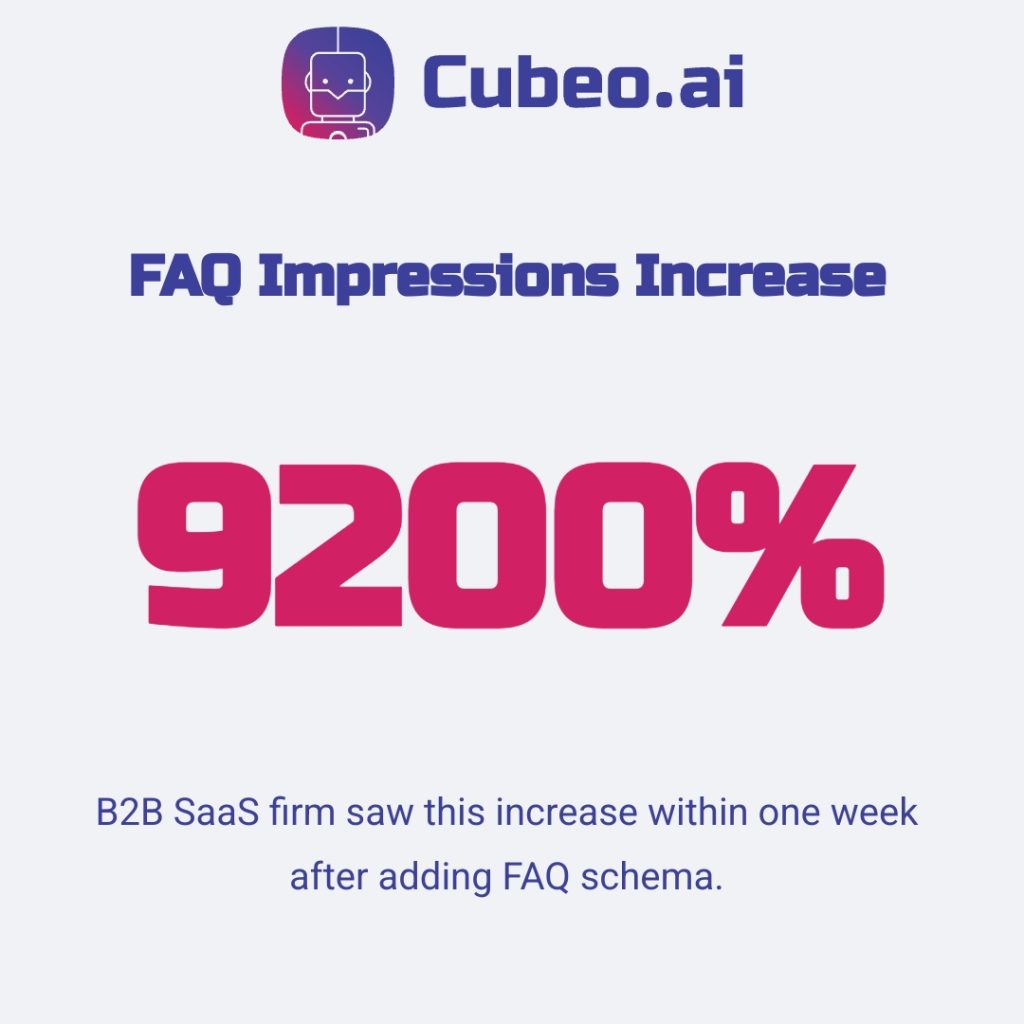
Off-Site Signals That Boost AI Engine Trust and Citations
Off-site signals—backlinks, brand mentions, and social proof, tell answer engines whether your content is trustworthy. Do these 3 actions and run the quick QA checks.
Authority Building:
- Action: Secure backlinks from industry publishers and expert networks
- QA: Confirm the mention on the publisher page and record the referring URL
- Case: A skincare brand restructured for AI citation and doubled conversions using authority building strategies
Social Engagement:
- Action: Amplify content to targeted communities and solicit expert comments
- QA: Track brand-mention volume and engagement for 7 days using alerts
- Evidence: A retailer grew mentions 156% and conversions 78% after strategic distribution
Citation and Link Tactics:
- Action: Publish quotable, standalone paragraphs with clear attributions; prioritize quality links
- QA: Use site: checks and direct page verification following link building best practices
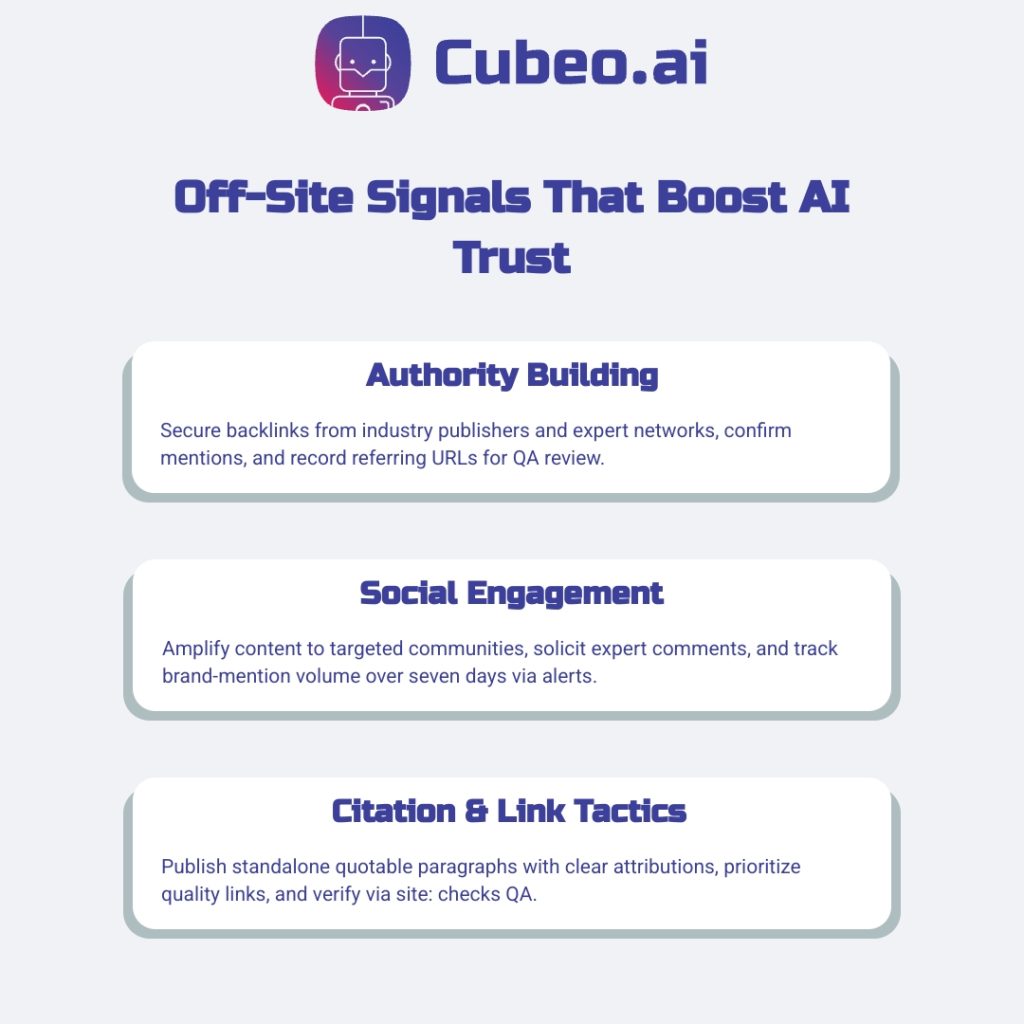
Measuring AEO Success With Practical KPIs
AI Overviews intercept 30-45% of clicks from organic results, but cited sources often deliver higher conversion rates despite lower traffic volumes.
AEO-Specific KPIs:
- AI citation frequency (mentions in ChatGPT, Perplexity, Claude responses)
- Brand mention volume in AI-generated answers
- Conversion rate from AI referral traffic
- Schema markup coverage across key pages
Priority KPI Pack:
- Visibility — unique citations/week (pilot goal: +5-10/week);
- Citation volume by engine/week;
- Downstream conversions from Answer Engine Traffic (conversion rate, revenue per user). Expect first measurable citations in 7-14 days; monitor weekly for first 8 weeks, then monthly.
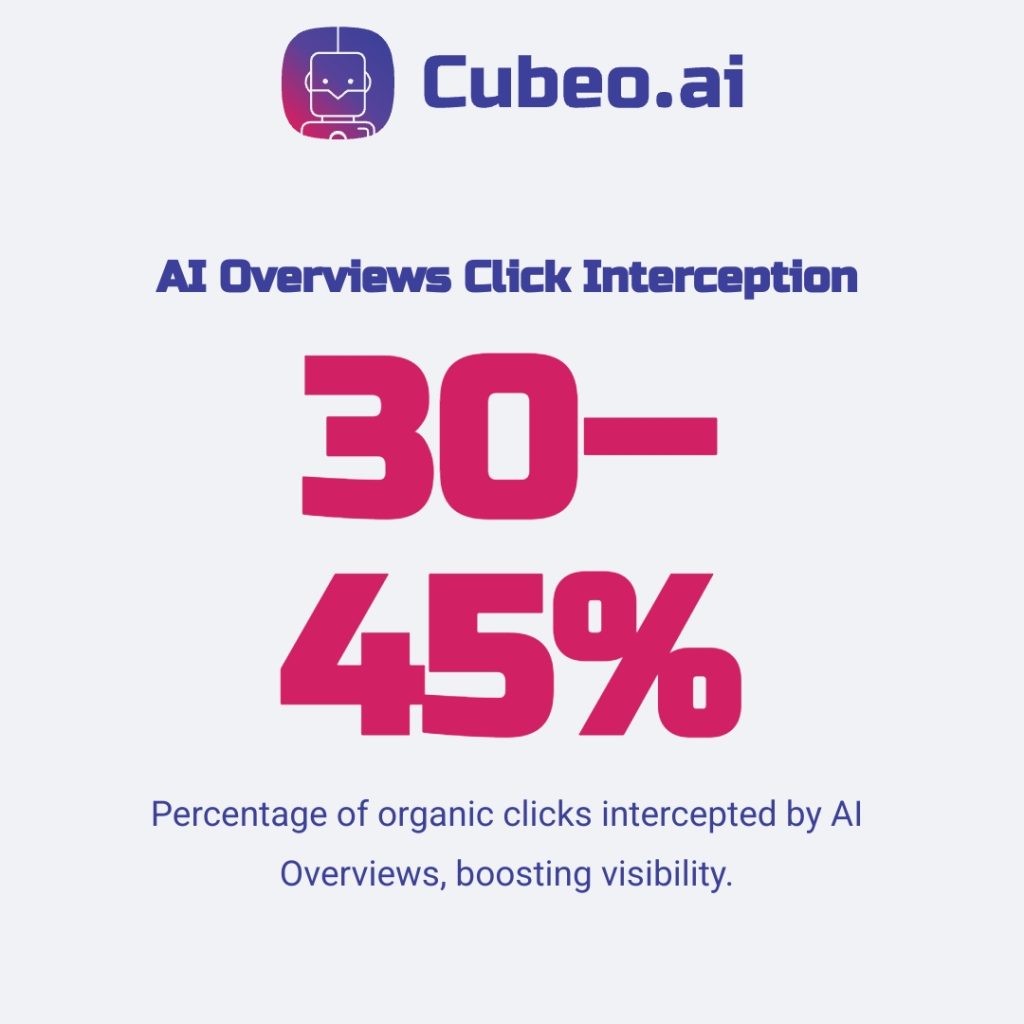
FAQ
What's the difference between SEO, LEO, and AEO optimization strategies?
SEO (Search Engine Optimization) focuses on traditional search rankings and driving clicks to websites, while AEO (Answer Engine Optimization) prioritizes getting content directly quoted or cited by AI tools and voice assistants, often without requiring a click-through. LEO (Language Engine Optimization), sometimes referred to as GEO (Generative Engine Optimization), specifically targets visibility within AI-powered tools like ChatGPT or Gemini, emphasizing conversational prompts and narrative over structured metadata.
While SEO aims for organic traffic through keywords and page rankings, AEO optimizes for immediate, concise answers in AI-driven results, featured snippets, and knowledge panels. LEO, on the other hand, focuses on helping brands be found, cited, and trusted by large language models (LLMs) by optimizing for more conversational and in-depth queries. In essence, SEO is about getting found, AEO is about providing direct answers, and LEO is about being a trusted source for generative AI.
For businesses, integrating these strategies is crucial. SEO ensures your website is discoverable through traditional search, AEO captures zero-click and voice searches by providing direct answers, and LEO ensures your content is visible and trusted in AI generated responses. This comprehensive approach allows businesses to meet users across all search platforms, from Google to ChatGPT to Alexa, transforming how they engage with information.
Which schema types are most important for Answer Engine Optimization?
For Answer Engine Optimization (AEO), several schema types are crucial for helping AI and search engines understand and display your content effectively. Key schema types include FAQPage for frequently asked questions, HowTo for tutorials and guides, and Article or BlogPosting for long-form content and news updates. These structured data markups provide context beyond just keywords, making it easier for search engines to identify important information and present it in rich snippets or direct answers.
Schema markup is essential because it tells Google and other AI-driven search tools what type of content is on a page, such as a product review, recipe, or FAQ. This structured approach enhances visibility in search results by improving context understanding, which is vital as people increasingly use AI assistants and zero-click search results. By clearly labeling your content, you increase the likelihood of it appearing in featured snippets, knowledge panels, and voice search responses.
Implementing relevant schema types, especially for e-commerce, can also include Product and Review markup to provide clear pricing, detailed specifications, and customer testimonials. The goal is to make your content easily digestible for AI, ensuring it can generate clear, concise, and correct answers. This strategic use of schema helps bridge the gap between complex information and accessible, AI-driven responses, empowering users to find the information they need quickly.
How can I measure AEO success using GA4 and other analytics tools?
Measuring Answer Engine Optimization (AEO) success requires evolving beyond traditional SEO metrics and adopting new indicators, especially with tools like GA4. A key approach is to configure GA4 tracking to monitor traffic originating from Large Language Models (LLMs) such as ChatGPT, Gemini, Site Copilot, and Perplexity. This can be achieved by filtering by referrer or using UTM parameters for links embedded in AI-generated responses, providing insights into how users are finding your brand through AI.
Beyond traffic, AEO success involves tracking metrics like answer inclusion, entity recognition, and schema adoption. While no single platform perfectly tracks AI Overviews yet, tools like Profoundvisibility and Scrunch AI can help measure brand performance across major AI engines, tracking share of voice, competitive positioning, and citation context that traditional analytics might miss. It’s also important to monitor conversion outcomes from LLM-linked traffic, using custom UTMs, campaign source fields, or post-lead surveys to attribute form fills, demo requests, or purchases.
Furthermore, focus on enhancing EEAT (Expertise, Experience, Authoritativeness, and Trust) signals within your content, as these help AI models evaluate and surface your content as credible. Regularly audit for “AI-overview” snippets in Google SERPs using platforms like SEMrush or Ahrefs, tracking featured answer boxes and AI result badges. By combining GA4’s capabilities with specialized AI visibility platforms and a focus on content quality, you can create a holistic dashboard to measure and refine your AEO strategy, ensuring your content is not only visible but also trusted and cited by AI.



